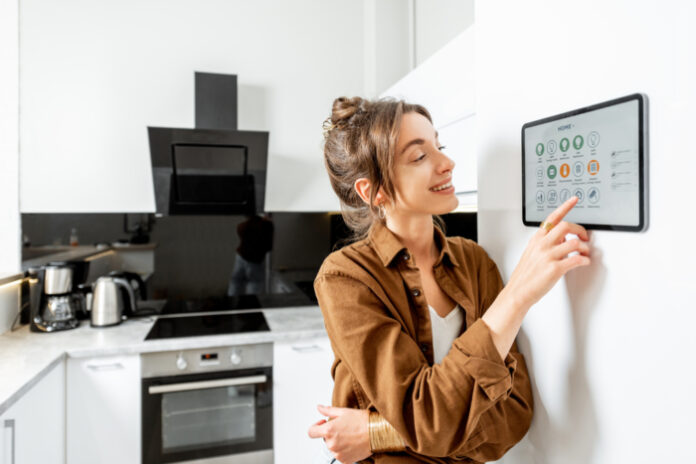Everyone loves a comfortable, convenient, and secure home. With the emergence of automation in home improvement and construction, it’s no surprise that more and more homeowners are incorporating smart home devices into their homes.
Many construction companies are struggling to learn how to manage a software development team to create an automated environment. Integrating software developers and engineers can help companies develop cutting-edge solutions to leverage smart home technologies. In addition, they also search for existing smart home devices to fit their specific needs.
Several smart home devices are available, each designed to address particular aspects of home automation. From controlling lights and appliances to setting up reminders, these devices can help make your home smarter than ever before. In this blog post, you’ll learn about the different types of smart home devices available and what each one does. So, let’s get started.
1. Smart Light Bulbs
Perfect lighting is essential to make your smart home more energy efficient and comfortable. Smart light bulbs are designed to work with a home automation system, such as Amazon Alexa or Apple HomeKit. These lights can be controlled through voice commands or an app, allowing you to dim the lights instantly when needed.
Over the years, smart bulbs have improved and are now available in different colors, styles, and sizes. Some bulbs even have motion sensors or timers that can be programmed to turn on the lights when you enter a room automatically.
2. Smart Thermostats for Temperature Regulation
Smart thermostats are becoming increasingly popular in homes as they can help you save energy and money. These devices are designed to work with a home automation system, such as Amazon Echo, Apple HomeKit, and Google Home. They allow you to control the temperature in your house through voice commands or an app.
Smart thermostats can also detect when someone is away from home and automatically adjust the temperature accordingly. They also have sensors that measure the temperature and humidity in your home, allowing you to create personalized settings for maximum comfort.
3. Smart Security Systems
Smart security systems are an important part of any smart home system. They allow homeowners to monitor their homes remotely and receive alerts if suspicious activity occurs. These systems come with sensors that detect motion and sound. They also have cameras that can be used to view the inside and outside of your home.
Smart security systems can also be integrated with other home automation devices, such as lights and locks, for added convenience. This way, if an intruder breaks into your house, you can automatically turn on the lights or lock the doors remotely using your smartphone.

4. Smart Kitchen Devices
Smart kitchen devices are becoming increasingly popular as they can help make meal preparation easier and more efficient. These devices include everything from smart ovens that allow you to monitor cooking temperatures remotely to refrigerators that can suggest recipes based on the ingredients in your fridge.
Smart pressure cookers are also available and can be programmed to cook dishes such as rice, soup, or even cake in a fraction of the time it normally takes. In addition to making meal preparation easier, these devices can also help you save energy as they are designed to use less electricity than traditional kitchen appliances.
5. Smart Bathroom Showers
Smart showers are another great way to make your home more energy efficient and comfortable. These devices come with sensors that detect water temperature and pressure, allowing you to set a particular shower setting for maximum comfort. They can also be programmed to automatically turn off the water if it’s been running for too long or if there is a sudden temperature change.
Some smart showers provide showering information such as water usage and duration, which can be monitored through an app. This way, you can track how much water you’re using each day and make any necessary adjustments to help conserve energy and save money.
6. Smart Music Speakers
Smart music speakers are an excellent way to enjoy your favorite songs in any room of the house. These devices come with built-in streaming services such as Spotify, Pandora, and Apple Music, allowing you to stream music directly from your smartphone or computer. Some smart speakers also have voice control capabilities, meaning you can control the volume or skip songs using your voice. While some come with a touchscreen display, others come in various shapes, sizes, and colors.
Some companies also design smart speakers to respond to different voice commands, so you can ask for information or control your home automation system without ever touching the device. Smart speaker manufacturers take help from software developers to make the software that runs these devices. Some companies hire remote developers to incorporate the latest technologies into their products.
7. Smart Control Hubs
Smart control hubs are the center of any smart home system. These devices allow you to connect and control all your compatible smart home devices from a single location. These hubs also have built-in voice assistants such as Amazon Alexa, Google Assistant, or Apple HomeKit. This way, you can use your voice to control your home’s lights, locks, thermostats, and other devices.
These hubs come with various features such as scheduling, automation, remote access, and more, allowing you to customize your smart home experience however you see fit. Connecting all your compatible devices to the hub allows you to monitor and manage them from one central location easily.
Find a Home-Based Business to Start-Up >>> Hundreds of Business Listings.
















































